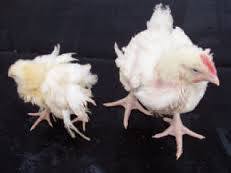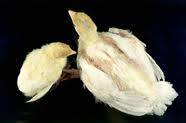Philemon Buruzi
There is always a time in the life of a broiler farmer when they come across a batch of birds that fails to perform to expectations. Most of the times when such a case comes up, the blame is put squarely on the shoulders of the hatchery which produced the chicks. It is quite often that you hear somebody mention that such and such a company sold me ‘rejects’ after the birds have failed to grow up to the expected size. Some might want to attribute the poor performance to poorly formulated feeds or lack of requisite husbandry experience on the part of the farmer but I can testify that I have encountered this scenario in circumstances whereby the farmer is an experienced broiler producer who has been in the industry for years. A case whereby chicks are procured from the best hatchery in the country whose quality control system is beyond question and the same goes for the feed used – top quality. The batch in question is accorded the same treatment as all the other batches that preceded it and the birds do not die significantly or show apparent signs of ill-health but the growth rate fails to meet the grade. Realising that this could be some kind of disease most farmers visit the drug stores and they are advised to purchase vitamin stress packs, antibiotics and at times anti-coccidial drugs all to no avail. What then could be the cause of all that?
The scenario described above is that of a disease called Runting-Stunting Syndrome also known as the malabsorption syndrome. This is a disease that strikes the birds whilst they are still young such that the runting and stunting start to manifest as early as the first week. Runting and Stunting Syndrome is caused by what is widely believed to be a group of viruses whereby reoviruses and enteroviruses are major players. The viruses attack the gastrointestinal tract of the affected birds which results in failure to adequately digest as well as absorb the feed ingested. It is important to note that after viruses have damaged the intestinal walls, bacteria and other microorganisms take advantage and attack the damaged tissue exacerbating the already compromised health of the bird.
Signs and Symptoms
Owing to the fact that the intestines of the affected birds are damaged by the enteroviruses, there is usually a case of diarrhoea during the initial phases of the disease. There is a general show of vent pasting and faecal stripes at back-end of the affected young chicks. This has often been mistaken for coccidiosis by many broiler farmers leading them to purchase hordes and hordes of irrelevant drugs. The failure by the broiler to fully digest and absorb the ingested feed results in undigested feed being visibly present in the faecal matter which always points to another prominent sign of Runting and Stunting Syndrome –that is the birds consume their own faecal matter.
Given that the feed eaten is passing through the gastro-intestinal tract virtually untouched, the feed conversion rate plummets by up to 20 percent and as a result the growth rate is heavily compromised , hence a good number of the broilers show extreme growth retardation. There is an obvious sign of poor growth whereby the body size and weight does not tally with the expected for the birds age as illustrated in the picture below:


These birds are of the same age
Stunting which is a dominant feature at the initial stages of the disease is temporary and tends to fizzle away as the bird ages but the runting is permanent and remains in force up to the point of slaughter. The development of feathers is also hampered and in some cases abnormal feathers develop as shown below:
 `
`
A closer look at the affected birds reveal an excessive withdrawal of pigmentation from beak and shanks of the legs, a feature which earned the disease the name “pale disease syndrome”. Furthermore the affected birds tend to develop distended and pendulous abdomens owing to a voracious appetite against a backdrop of digestive malfunctions. The said digestive malfunction are responsible for the excessive flushing that accompanies this disease and often leads to cases of wet litter and excessive litter caking. As flushing persist other vital dietary elements especially vitamins are lost and this leads to arousal of what become known as secondary symptoms such as encephalomalacia, a result of vitamin E deficiency.
Treatment and Control
Runting and Stunting Syndrome is caused by viruses and just like all other viral diseases there is no cure for it. It therefore means that the only way to deal with this disease is to prevent its occurrence. Unfortunately owing to the fact that the virus that is responsible for causing the disease has not been isolated, there is no vaccine for the disease yet. Hence it is recommended that high levels of hygiene in the poultry house and its surroundings be maintained at all times in order to reduce the levels of the field viruses. It is also important to observe all bio-security measures in order to curb the introduction of the viruses from outside the farm boundaries as well as from outside into the poultry house. When all this has been done it remains fundamental to ensure that predisposing factors such as improper temperature regulation, ventilation, inadequate or improper feed as well as general stress are avoided especially during the brooding period. Never allow build up in the poultry house as this allows the field viruses to accumulate and one day infect and affect your chicks right on the day of placement.
For all questions and comments: philemonburuzi@gmail.com. Responses will be provided within the shortest possible time.
http://www.agriuniverse.co.zw

